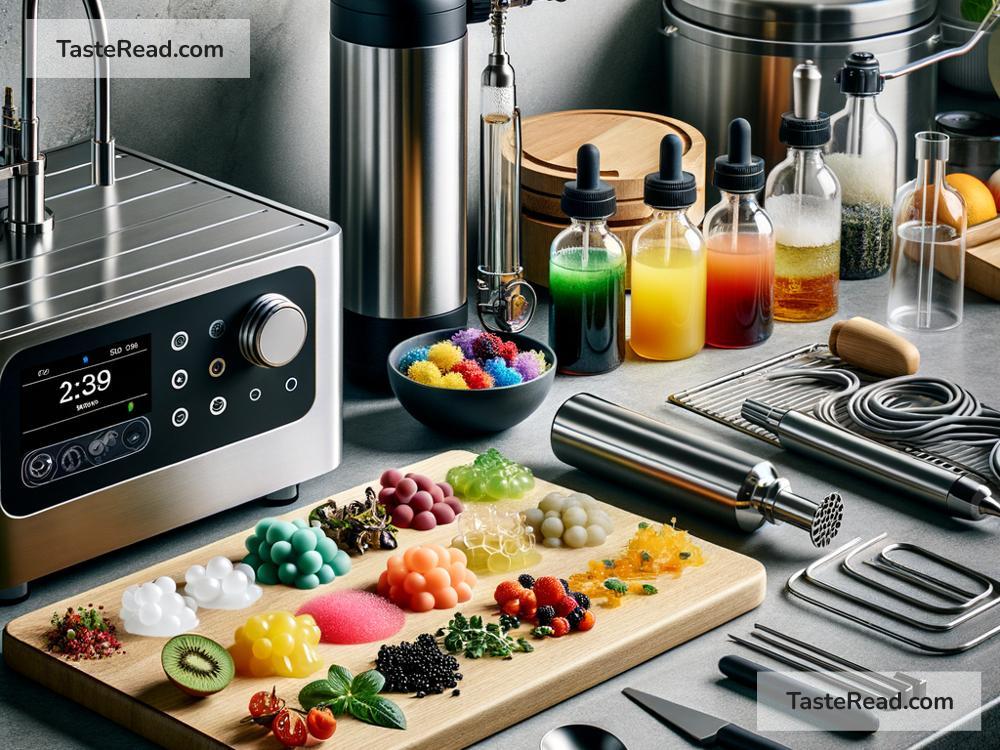The Science of Cooking with Chemical Synthesis: Techniques and Tips
Cooking is often seen as an art, but it’s also deeply rooted in science. When you cook, you’re working with chemistry—combining ingredients and creating reactions that transform food into delicious meals. One fascinating aspect of this is chemical synthesis in cooking, where we use scientific techniques to modify foods and unlock new flavors, textures, and experiences.
Let’s dive into the world of chemical synthesis in cooking, explaining the techniques in simple terms and offering tips to incorporate them into your kitchen.
What is Chemical Synthesis in Cooking?
Chemical synthesis involves combining two or more substances to create a new one. In cooking, this means taking basic ingredients and creating new compounds that enhance flavor, improve texture, or preserve freshness. While it might sound technical, many forms of chemical synthesis are already common in everyday cooking.
Think about caramelization—when sugar heats up and transforms into caramel—or the fermentation process that turns milk into yogurt or grapes into wine. These are examples of chemical synthesis happening right in your kitchen.
Why Use Science in Cooking?
Understanding how cooking works on a chemical level allows you to tweak recipes, fix mistakes, and even create unique dishes. With scientific techniques, you can:
- Improve the texture or consistency of your foods.
- Enhance natural flavors.
- Expand your cooking creativity by using new methods.
- Better understand why recipes work (or fail).
Science-based cooking doesn’t require a laboratory—it simply requires curiosity and a willingness to experiment.
Popular Techniques in Scientific Cooking
Here are some techniques rooted in chemical synthesis that you can use in the kitchen:
1. Emulsification
Emulsification is the process of combining two ingredients that don’t easily mix, like oil and water. When you make mayonnaise, the egg yolk acts as an emulsifier, allowing the oil and lemon juice to form a smooth sauce.
Tip to Try at Home: Make your own vinaigrette! Combine oil, vinegar, and a bit of mustard (the mustard helps emulsify the mix). Shake it in a jar—voilà! You have a science-based salad dressing.
2. Gelation
Gelation involves transforming liquids into gels using a thickening agent like gelatin or agar-agar. This technique is common in desserts like Jell-O or panna cotta. By manipulating the compounds in your ingredients, you can create unique textures.
Tip to Try at Home: Experiment with agar-agar (a plant-based substitute for gelatin) to make fruit jellies. Dissolve it in hot juice, let it cool, and enjoy your homemade edible science project.
3. Caramelization and Maillard Reaction
Caramelization is when sugars in food break down under heat to create a rich, sweet flavor. The Maillard reaction happens when proteins and sugars react under heat, producing the browning and complex flavors you associate with roasted meats, baked bread, or grilled veggies.
Tip to Try at Home: For perfect caramelization on onions, cook them slowly over medium heat and stir often. Patience is key—let the sugar transform and create a deliciously sweet flavor.
4. Fermentation
Fermentation uses microorganisms, like bacteria or yeast, to break down sugars. This chemical reaction produces new flavors and textures in foods like yogurt, kefir, sourdough bread, and pickles.
Tip to Try at Home: Make your own simple pickles by fermenting cucumbers in a brine of salt and water. Place your cucumbers in the brine, seal the container, and let science work its magic over the next few days.
5. Spherification
Spherification is an advanced technique that uses calcium and sodium compounds to turn liquids into tiny spheres, somewhat like caviar. It’s popular in molecular gastronomy, where chefs create dishes that look and feel extraordinary.
Tip to Try at Home: While spherification requires special chemicals, you can do fun experiments with simpler techniques. For example, freeze juice into small molds for a cool spherical garnish for drinks.
How to Add Science to Your Cooking Routine
You don’t need fancy tools or chemicals to start experimenting with chemical synthesis. Here are simple ways to explore science in your cooking:
- Start Small: Begin with techniques like caramelization, gelation, or fermentation. These are approachable and don’t require special equipment.
- Be Precise: Scientific cooking relies on exact measurements and temperatures. When trying a new technique, stick to the recipe to get accurate results.
- Experiment and Learn: Cooking is a mix of science and creativity. Don’t be afraid to play around with ingredients and techniques—you’ll learn a lot through trial and error.
- Research Recipes: Many websites and cookbooks focus on scientific cooking methods. Dive into these resources to expand your knowledge.
Cooking Tips for Science Enthusiasts
-
Invest in a Thermometer: Many chemical reactions depend on heat. A kitchen thermometer helps you control temperature precisely, especially when caramelizing or baking.
-
Use the Right Tools: For emulsification or blending, an immersion blender is very useful. For gelation, silicone molds create fun shapes.
-
Understand the Ingredients: Explore how acids (like vinegar or lemon juice) or bases (like baking soda) affect cooking processes. You’ll be able to adjust flavors and textures with this knowledge.
Final Thoughts
Cooking with chemical synthesis might sound futuristic, but it’s really just understanding the science behind what happens in your kitchen. By learning techniques like emulsification, gelation, fermentation, and caramelization, you can elevate your cooking and deepen your appreciation for the magic of food science.
So next time you cook, think about the chemical reactions happening right before your eyes. With a little curiosity and creativity, you can turn your kitchen into a space where science and deliciousness come together. Happy experimenting!


